). Today we will tell you a little and show you a lot about an amazing, graceful and deadly animal, about which little is known, because it lives snow leopard high in the mountains, where normal researchers don’t go :)
Snow leopard is a predator of the cat family. Its other names are ibris, snow leopard. The snow leopard is one of the highest mountain animals. The snow leopard lives in the mountains of the Himalayas, Hindu Kush, Pamir, Tien Shan, Altai and Western Sayan, Greater Caucasus and adjacent mountain ranges. In most areas, the snow leopard stays in the summer near alpine meadows along the snow line. In winter, following the ungulates, it descends.
Pregnancy Leopard Pregnancy lasts three months. They look at the sixth day, and on the tenth they can crawl. When they are two months old, the babies leave the den and play for long hours before entering. When the little ones are three months old, they follow their mother everywhere, and they are already hunting by five months.
Curious facts about the snow leopard
A man does not participate in raising young people. Young snow leopards hunt in groups, circling the prey from all sides, and the mother delivers the final blow. It can jump over 9 meters in length when trying to catch a low flying bird. The appearance of the snow leopard is extremely sharp. He can see a small rodent from a great height and quietly walk slowly so that it does not notice. However, this only occurs in areas where the wild ungulate mammals that feed on the Snow Leopard have disappeared due to deforestation.
The snow leopard is mainly active at dusk, but sometimes during the day. He hunts most of the time before sunset and in the morning at dawn. In the south of its range, for example, in the Himalayas, the snow leopard goes out hunting only before sunset. During the day, snow leopards mostly rest, sleep, and lie on the rocks.
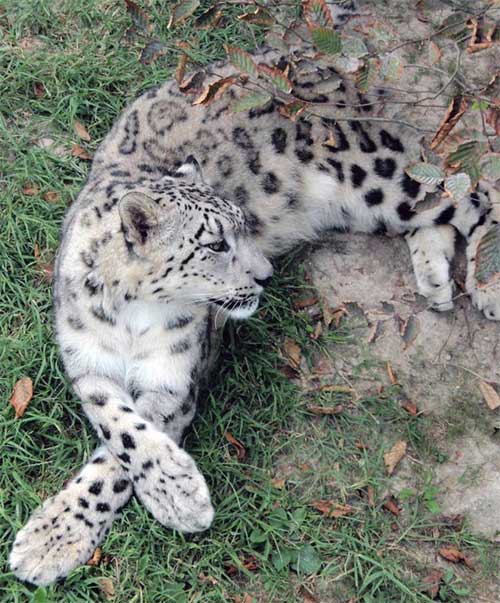
The animals that exist on our planet are the most beautiful and diverse creatures it has to offer. They have any size, shape and color. Although in most cases, when we talk about an animal, we associate it mainly with the color of its coat or feathers, for example, if black and white is a panda, if pink is a flamingo, etc. There are some animals that are a real joy for the eyes. They are so colorful and at the same time beautiful, as if an experienced artist chose the most matching colors and wounded them.
The snow leopard makes its lair in caves and rock crevices, among rocky heaps, often under an overhanging slab and in other similar places where it hides during the day. Often the snow leopard occupies the same den for several years in a row. In the Kyrgyz Alatau there are known cases when snow leopards were used for daytime roosting large nests of black vultures, located on low-growing junipers.
Sometimes these colors help animals attract people of the opposite sex or hide them from their natural enemies. In other cases, their beautiful coloring has no precise purpose, but is wonderful to the human eye. So, for an even more beautiful and colorful day, we present to you animals with the most colorful colors from around the world.
We can't help but start with him. However, the peacock is one of the most beautiful birds on the planet and has been considered a symbol of royalty and greatness for centuries. Today it is often found in large mansions and can be seen in zoos around the world. The peacock can be seen in the wild, but due to its beautiful feathers, it is often targeted for poaching. The male peacock proudly displays his magnificent fan tail during mating season in an attempt to attract the attention of a female. However, this is not an easy task, since she is constantly distracted by the surrounding vegetation, in which danger may be hidden.

A number of subspecies of snow leopard are known. They differ from each other in basic color, spotting and size. Males are usually larger, more massive, stronger than their fellow tribesmen. Adult males weigh from 65 to 75 kg. Body length - up to 2.1 m. The tail (3/7 of the total length) is thick, covered with thick hair.
It is because of the peacock that such magnificent colors are arranged so that they can always be seen. Speaking about peacocks, we remember that they are so beautiful that some animals even imitate them. That's what makes shrimp pancakes. Like its namesake, the peacock shrimp boasts stunning blue, green and red flowers. But unlike the peacock, shrimp are so beautiful that they attract small fish and snails, which they eat.
While we're still underwater, we can't help but mention the blue-ringed octopus. He lives in Pacific Ocean and in the Indian Ocean. Besides being beautiful, it is also recognized as the most poisonous marine animal. He only got his name because of the bright blue rings that are all over his body. By the way, these rings become brighter when the octopus feels threatened. This is a kind of warning for those who want to harm him. Through this, the octopus says to itself: Are you sure you should be nasty to me?
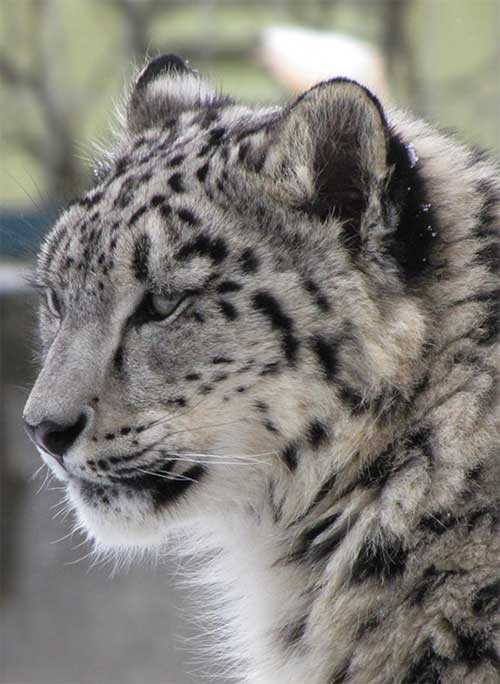
The snow leopard's vision is well developed and sharp. Distinctive feature Compared to other large cats: the limbs of the snow leopard are relatively short. The paws of a snow leopard resemble the paws of a lynx and, thanks to the special structure of their feet, allow them to walk through deep snow without falling into it. The paw muscles are very strong.
We can't help but mention that the fish are truly colorful! Depending on the subspecies, the fish may be turquoise, bright green, pink, blue or orange, which varies depending on age. This is where their beauty comes from: the colors gradually change, and often it turns out that they are all present on the body of the fish. But above all, they are very convenient in areas where people do not hunt them either. This is why they are some of the easiest fish to watch.
It comes from Turkmenistan, where it is a national symbol. The so-called "golden horses" are adapted to the harsh climatic conditions of the Asian deserts and are known for their speed and endurance for long treks. The Achalka breed is one of the most distinctive and unusual breeds in the world. These horses are often referred to as "Heavenly Horses" as well as "Royal Horses" in the breed's centuries-long history.
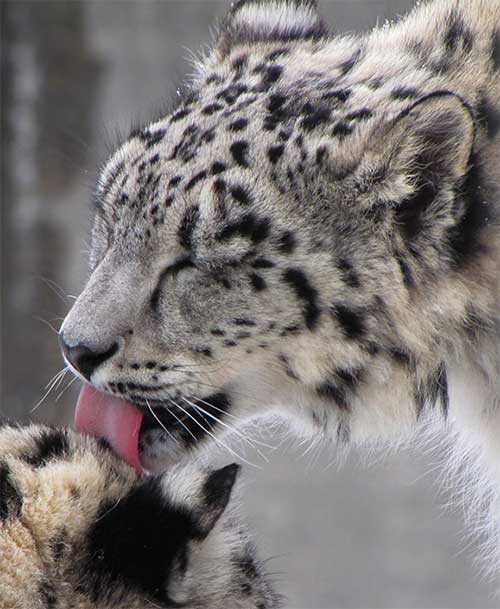
However, the snow leopard is poorly adapted to moving through deep, loose snow cover. In areas where there is loose snow, snow leopards mainly trample down permanent paths along which they move for a long time.
These horses have a very short and shiny coat, and their most common color is golden gray. It is known for its beautiful, thick coat. It has a white, yellowish or light gray coat covered with interesting dark stripes. In addition to being beautiful, this look greatly conceals the leopard from its prey as it stalks. Its thick coat makes it durable and adaptable to low temperatures and drier habitats. Snow leopards live in the high, rocky mountains of Central Asia.
They can be found in Afghanistan, Kazakhstan and Russia. The exact number of those who are at large is impossible to determine. Snow leopards have light blue or gray eyes, which is unusual for big cats - their eyes are usually yellow or gold in color. Snow leopards are most active at sunrise and sunset, but are rarely seen in the wild.
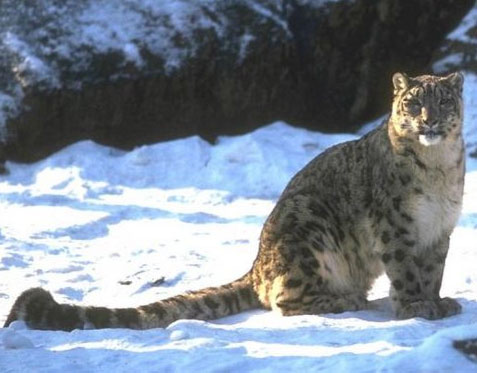
Interesting fact: long and flexible tongue snow leopard equipped on the sides with special tubercles, which are covered with keratinized skin and allow the meat to be separated from the skeleton of the victim. These bumps also help with "washing".
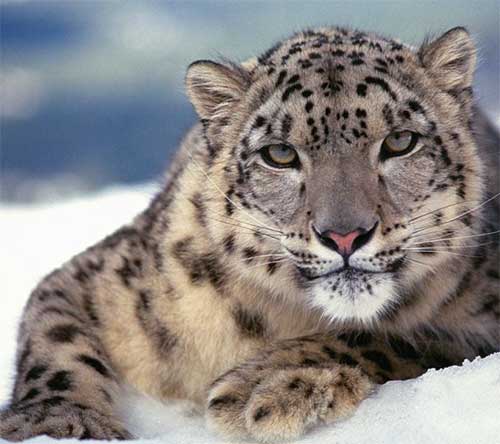
Unlike other big cats, they do not roar. Do you love reading and learning the most interesting facts about other animals? Siberia, with its pristine nature, huge forests, mountains, crystal clear rivers and lakes, is becoming an increasingly attractive place for ecotourism lovers. This part of Russia is not very popular among tourists, so excursions are usually organized for small groups. Wild Siberian nature attracts only true fans.
Central Siberian Nature Reserve. The Central Siberian Nature Reserve is, in the truest sense of the word, raw, wild and very beautiful place. It is located in the Krasnoyarsk Territory, on the territory of the Turukhansk region and in the Evian region. This is the heart of Eurasia: it covers both the banks of the Yenisei, the impassable Podkamen Tunguska River, and the endless virgin taiga. The area is home to bears, salmon, wolverines, lynxes and, of course, samurai, which in ancient times were the basis of Siberian trade, and today they are protected in the reserve.
The tail is very long, exceeding three-quarters of the body length, covered long hair and therefore it seems very thick (visually its thickness is almost equal to the thickness of the snow leopard’s forearm). Serves as a balancer when jumping.
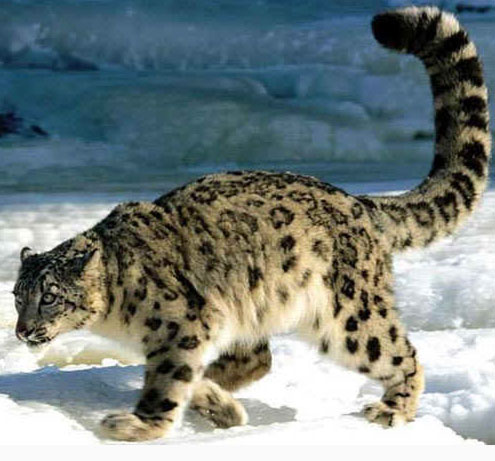
The snow leopard leads a mostly solitary lifestyle. An individual site is approximately 160 km2. The home ranges of males may partially overlap with the areas of 1-3 females. The favorite habitats of the snow leopard are rocky areas of the mountains, piles of stones, screes, where there is usually little snow - the winds blow it away, it is easier to hide from bad weather, find a place for an ambush, and hide from enemies. Here the animal also makes a lair, choosing a suitable cave, crevice or stone canopy, and sometimes even old vulture nests on low trees. He spends daylight hours in these shelters, and at dusk he goes out hunting. The leopard is very attached to its “home”, although when hunting it wanders very far from it.
Why visit the Central Siberian Nature Reserve? Here you will see all the diversity and uniqueness of untouched Siberian nature. About 400 million years ago, when life existed only in the seas and oceans, a tropical sea existed on the territory of today's Central Siberian Nature Reserve. Although the sea has long been dried up, along the banks of wild rivers, and now the corals are reminiscent of the past. Discovered fossils confirm that the continent of Siberia once had a continent called "Angardida", which covered the area of today's Siberian Plateau.

The snow leopard's fur is very long, thick, fluffy, with a thick undercoat. Serves as excellent protection from the cold in harsh conditions climatic conditions. Thick fur grows even between the snow leopard’s toes and protects the paw pads from the cold in winter and from hot stones in summer.
Scientists call ancient continent Angaridda, because they find evidence of their existence on the banks of Orel, when it occupied the territory of the modern Krasnoyarsk Territory and part of the Irkutsk region, and in the era of dinosaurs it became part of Eurasia. By the way, Russian and foreign scientists are still arguing whether it was a meteorite or whether something ever landed.
In the reserve you can also get acquainted with the life of the small Siberian people. They live in a separate settlement - the Yelogyan Nature Reserve. Some researchers say that the Kets are the direct ancestors of the North American Indians. Since ancient times, they lived on the banks of the Yenisei and were mainly engaged in hunting and fishing. Ancient Party Germans also live along the borders of the reserve.

The snow leopard regularly makes the rounds of its hunting area, visiting winter pastures and camps of wild ungulates. At the same time, he moves, adhering to the same routes. When going around pastures or descending from the upper belt of mountains to lower areas, the snow leopard always follows a path that usually follows a ridge or along a river or stream. The length of such a detour is usually long, so the snow leopard appears again in one place or another once every few days.
There are several eco-tours organized for tourists, the most interesting of which is the Fritzuf Nansen Undisguised Route, named after the Norwegian explorer and polar explorer of the early 20th century. The route includes an excursion to motor boat, tourist tours, day trips to the mountains.
Why visit the Baikal Nature Reserve? Here you can in the best possible way get to know Baikal, the deepest lake in the world, which is considered the Siberian calling card. The vast majority of nature reserves are located in the Irkutsk region, on the shores of Lake Baikal. It also includes the reserves of Kaban and Altaisk in Buryatia. Here they strive to preserve the southern shore of Lake Baikal and the central part of the Khamar-Daban mountain range. The lake is home to 360 species of animals and birds, many of which are listed in the Red Book: Great Drought, Golden Eagle, Golden Eagle, Red Deer, Forest Fish.

The snow leopard is a very good hunter. For him, hunting serves not only as a means of obtaining food, but also as fun. The snow leopard spends the day either in the den or near the den. At dusk he goes out hunting. A snow leopard can watch its prey for hours in ambush on a rock or under a rock. He sneaks up on her unnoticed and jumps with lightning speed. He often uses high stones for this, so that with an unexpected jump from above he can throw his prey to the ground and kill it. He can jump up to 6 meters in length and 2.5-3 meters in height. He walks without fear along the rocky ledges above the abyss and attacks his prey with sniper precision. Having not caught the prey immediately, it stops pursuing after several jumps.
Although the reserve covers a fairly small area, it is difficult to protect so many rare animals. For tourists who want to learn more about the history of Lake Baikal and the fauna in its depths and its shores, the reserve is the right place to do so. Thanks to the protected area, this part of Lake Baikal does not have noisy tourist crowds, which often leave behind huge amounts of garbage, and there are no trains running along the coast. The most interesting ornithological eco-tours for bird lovers, such as the “bird paradise” route, which also includes several days of hiking in remote campsites where reserve workers live, a boat excursion on Lake Baikal to Sandy Shores and nesting islands gray herons.

Leopards love to play and love to wallow in the snow. Having played out, they often slide down a steep hill on their backs, and at the bottom they quickly turn over and fall into a snowdrift on all four paws. After playing or hunting, they make themselves comfortable and bask in the sun.
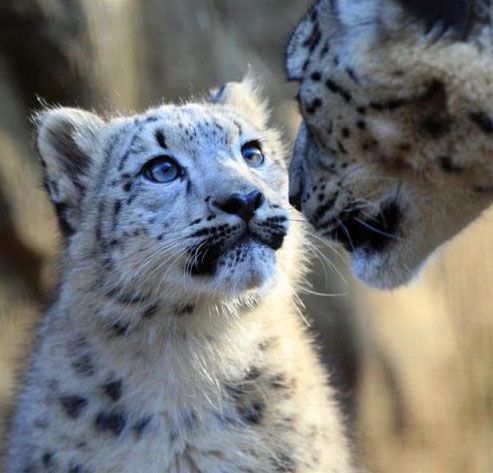
Special programs are available for everyone who likes to photograph wildlife; information can be found on the website of the Baikal Nature Reserve. In the protected area you should follow the great Baikal route, visit the Museum of Nature and learn to know the voices of birds and wildlife. Well, look at a star map in the Northern Hemisphere, because when the weather is clear, the Milky Way is clearly visible here. If you want to meet people from all over the world, spend time at an international volunteer camp.
Here you will see all the faces of Lake Baikal: when the weather is good and there is no wind, the lake is calm and blue, but during a storm it becomes a powerful and rebellious element. Sayano Shushen Nature Reserve. Why visit the Sayano-Shushen Nature Reserve? This is a place where the beauty and power of Siberian nature are combined with the great achievements of hydropower. The reserve workers will tell you interesting stories about the peculiarities of life in the taiga, poachers and scientific research in this part of Siberia.
The snow leopard is rutting early spring. The female does not produce offspring every year. Pregnancy in a female lasts 90 days. The female prefers to arrange her den in hard to reach places: in crevices, caves or other places where they will not be disturbed by likely enemies. The bottom of the den is lined with wool and undercoat, which the female rips out. During one litter, the female brings from one to five kittens. Kittens are born blind. Kittens' eyes open on days 5-6 of life. At 10 days of age, kittens begin to crawl, and at two months of age, they begin to leave the den, just to play at its entrance. From this time on, the mother begins to give them meat food. At the age of three months, kittens begin to follow their mother. At 5-6 months, snow leopard kittens are already hunting with their mother. The whole family sneaks up on the prey, but the female makes the decisive throw.
So, the snow leopard is not a dangerous predator for humans, it is very beautiful and quite rare...
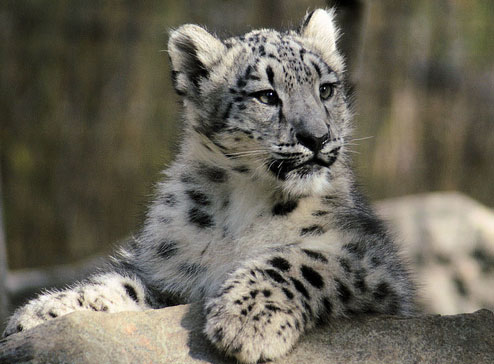
Based on materials from http://petland.org.ua/mode-article/pge-284.html
If you are lucky enough to see this beautiful mountain cat, you will not forget such a moment for the rest of your life. We are talking about a miracle of nature called the snow leopard. Snow leopard, leopard are other names for this animal. Mountain and snow predators are called because they live high in snow-capped mountains.
Irbis: description of the animal
Belongs to large predators. Its weight ranges from 40 to 60 kg, body length is about 130-145 cm, add to this a meter-long tail. The shape of the snow leopard animal resembles a leopard or an ordinary domestic cat. The leopard's paws are armed with narrow, sharp, curved claws. The limbs are so powerful that with their help the animal is able to jump over a gorge 9-10 m wide.
Wild snow leopard cats have a beautiful “fur coat.” Their fur is very long, lush, thick and soft to the touch. In such clothing, animals are protected from the cold even on frosty mountain peaks. Usually smaller predators from the cat family can boast of similar fur, so the leopard is to some extent unique in the cat kingdom. 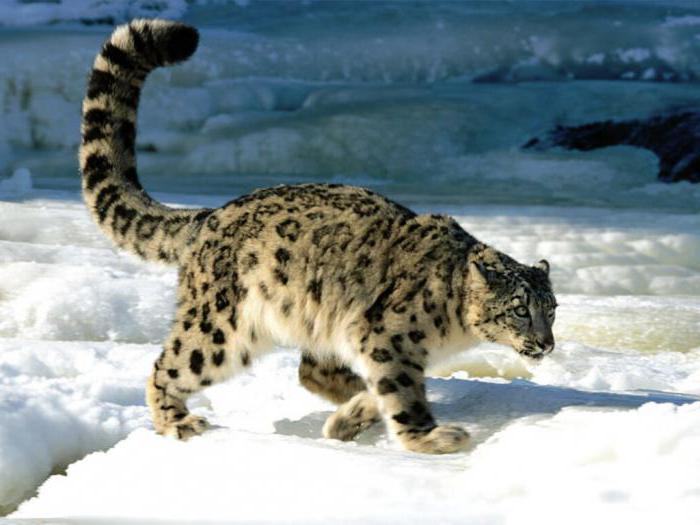 The coat color is light gray with a beautiful “wild” pattern in the form of dark rosettes. Belly and inner side limbs are white. In its natural habitat, such an “outfit” helps the predator camouflage itself in the right moments. It is interesting that, despite the loud title “predator”, this cat does not know how to growl at all; in moments of anger, it hisses and purrs, creating a semblance of a growl. During the rut, the snow leopard makes sounds reminiscent of purring. In captivity, a leopard can live 27-28 years; in the natural environment, the life expectancy of these predators does not exceed 20 years.
The coat color is light gray with a beautiful “wild” pattern in the form of dark rosettes. Belly and inner side limbs are white. In its natural habitat, such an “outfit” helps the predator camouflage itself in the right moments. It is interesting that, despite the loud title “predator”, this cat does not know how to growl at all; in moments of anger, it hisses and purrs, creating a semblance of a growl. During the rut, the snow leopard makes sounds reminiscent of purring. In captivity, a leopard can live 27-28 years; in the natural environment, the life expectancy of these predators does not exceed 20 years.
Animal snow leopard: where it lives in the wild
Large wild cats do not usually live high in the mountains. Snow leopard- This is an exception to the rule; it lives surrounded by rocky placers, steep gorges in rocky highlands. Not only because of its beautiful appearance, but also because of its habitat, the snow leopard is considered unique. The snow leopard is found in the mountains of Central Asia; its range covers an area of more than 1,230 thousand square meters. km. In Russia, the leopard occupied about 3% of the total area.
Lifestyle
The snow leopard is the owner and sole proprietor. This beautiful predatory “cat” occupies a certain territory, marks it, carefully defends it and protects it from uninvited guests. The animal's solitary lifestyle is disrupted by the snow leopard only during the mating season.
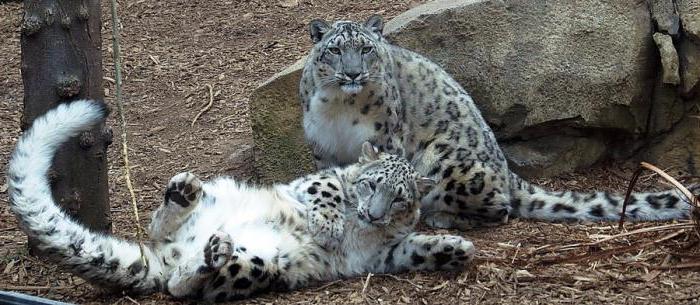 When checking the boundaries of her property, she always takes the same route. She, like other representatives, finds it difficult to move around loose snow. For this reason, predators make paths along the snow crust along which they move freely and quickly. Such a powerful beast has practically no enemies among animals. When the year is hungry, the snow leopard can enter into fights with packs of wolves for the right to possess the long-awaited prey, which is extremely dangerous. The main and, one might say, the only enemy of leopards is man.
When checking the boundaries of her property, she always takes the same route. She, like other representatives, finds it difficult to move around loose snow. For this reason, predators make paths along the snow crust along which they move freely and quickly. Such a powerful beast has practically no enemies among animals. When the year is hungry, the snow leopard can enter into fights with packs of wolves for the right to possess the long-awaited prey, which is extremely dangerous. The main and, one might say, the only enemy of leopards is man.
Diet
The favorite hunting time for the snow leopard is twilight. If there is enough prey in the area owned by the leopard, it feeds without trespassing. If there is not enough food, a predatory cat goes in search of it, approaching human settlements and attacking livestock. Among the wild animals on the menu of the mountain beauty are: goats, elk, rams, wild sheep, deer, marmots, hares, mice and other mammals. As a complement to meat “dishes,” leopards eat plant foods in the form of grass and other green parts of plants. If we talk about the strength of the snow leopard, it can easily cope with prey of equal size, and can also hunt game that is superior in height and strength.
Reproduction
The snow leopard animal is a rare predator due to its slow reproduction rate. These babies are not born every year, unlike other relatives. Snow leopards reach sexual maturity at three years of age. Snow leopards arrange their weddings in early spring; the mating season takes place in March-April. After fertilization, the female leopard carries her cubs for 100 days. One litter can have from one to five kittens.

Babies are born completely helpless. Newborn leopards are blind and deaf and weigh about half a kilogram. The mother predator feeds her cubs with her milk for up to 4 months. When they are 50-60 days old, the female begins to feed the babies with meat. Starting from the age of six months, kittens already accompany their mother on the hunt and learn this skill.
- Translated from the Turkic dialect, the name “irbis” means “snow cat.”
- The leopard is able to easily jump up to 5-6 m in length. According to hunters, in critical situations the predator can “fly over” a 10-meter-long gorge.
- The wild cat loves to play, especially frolic and roll around in the snow.
- When meeting a person, he does not flare up with aggression, he tries to quickly leave and hide.
- About once every two weeks, the leopard kills one large animal and feeds on this carcass for about 3-4 days.
- Can migrate following up to 600 km.
On the verge of extinction
As mentioned earlier, the snow leopard animal, unfortunately, does not belong to numerous species. The following reasons led to the snow leopard being on the verge of extinction:
![]()
It’s good that now people have come to their senses and are busy restoring and preserving this species of wild cats. The snow leopard is listed in the Red Book as a predator on the verge of extinction. Almost all countries in the world have banned leopard hunting. Let's hope that the fauna of planet Earth will not lose such a beautiful representative as the snow leopard.
